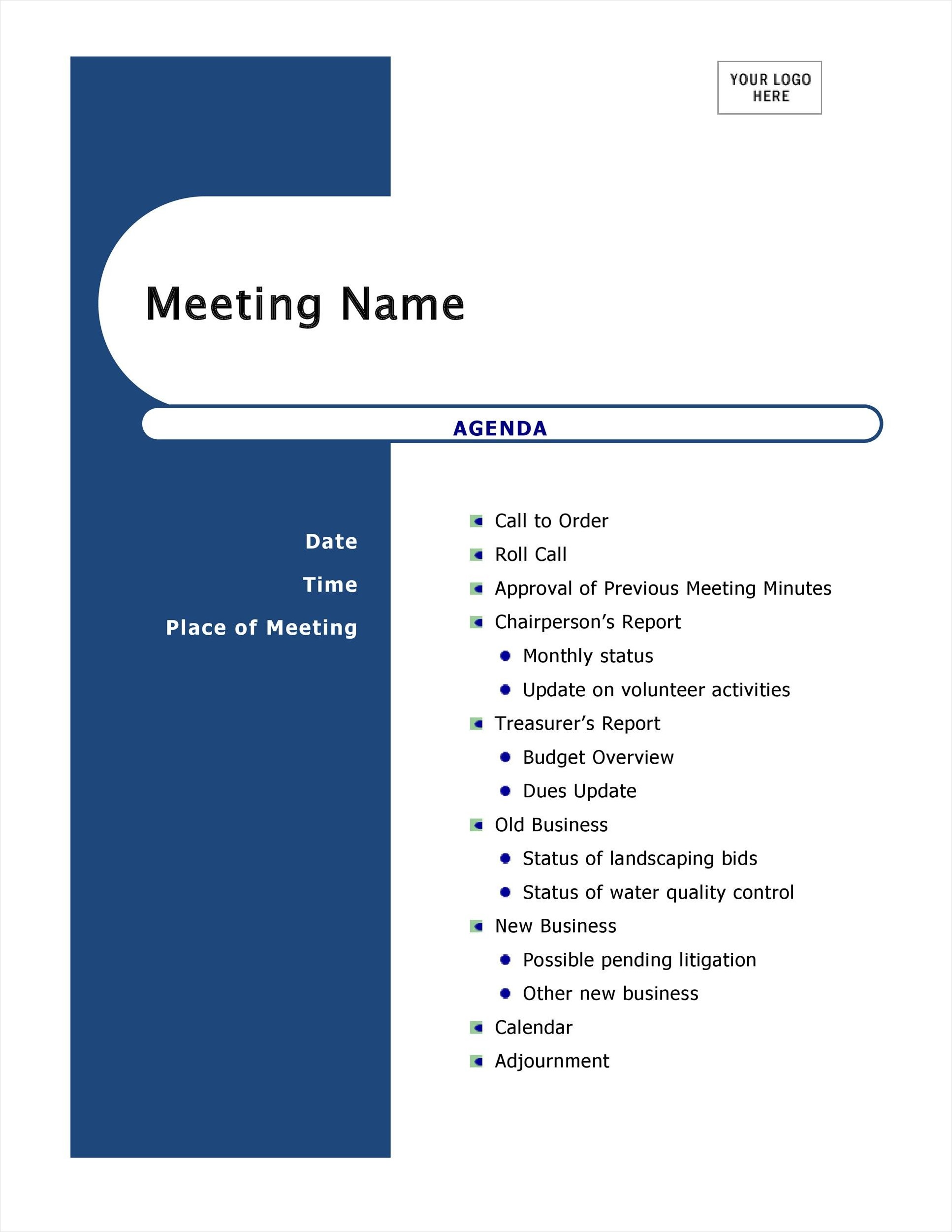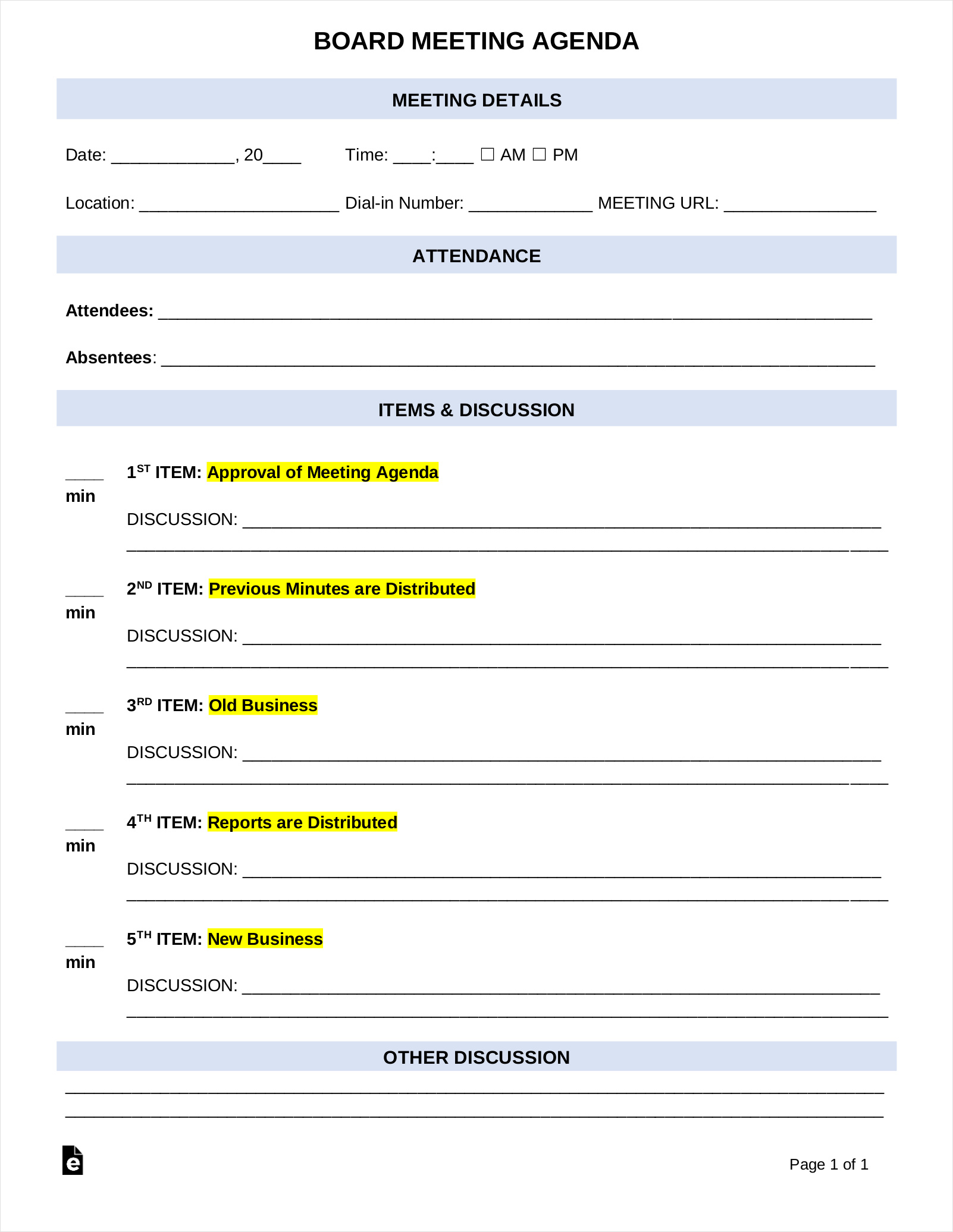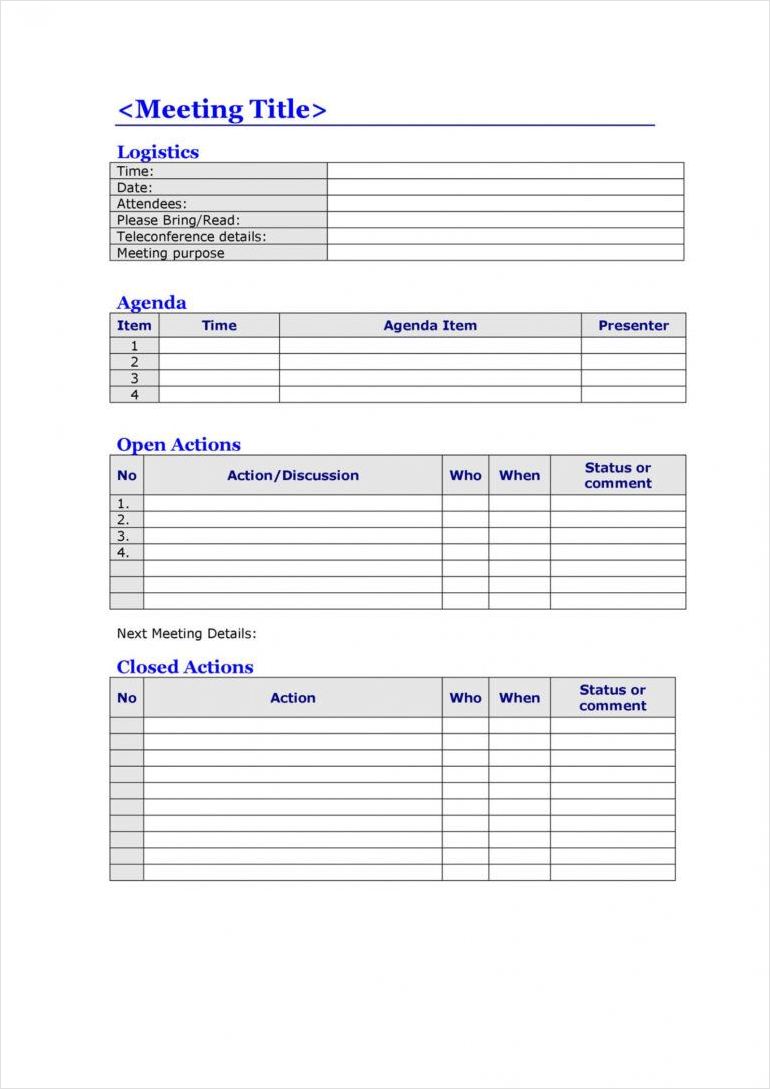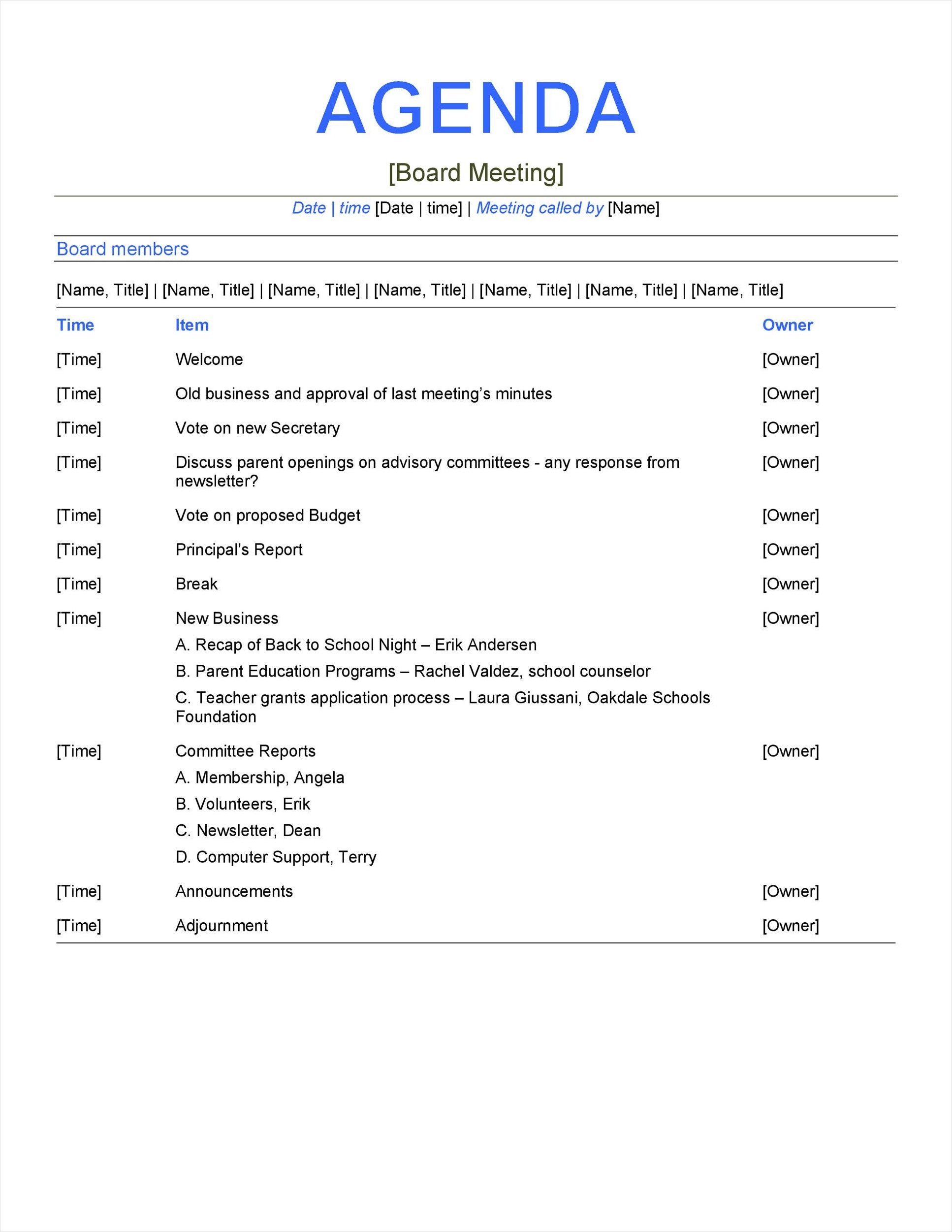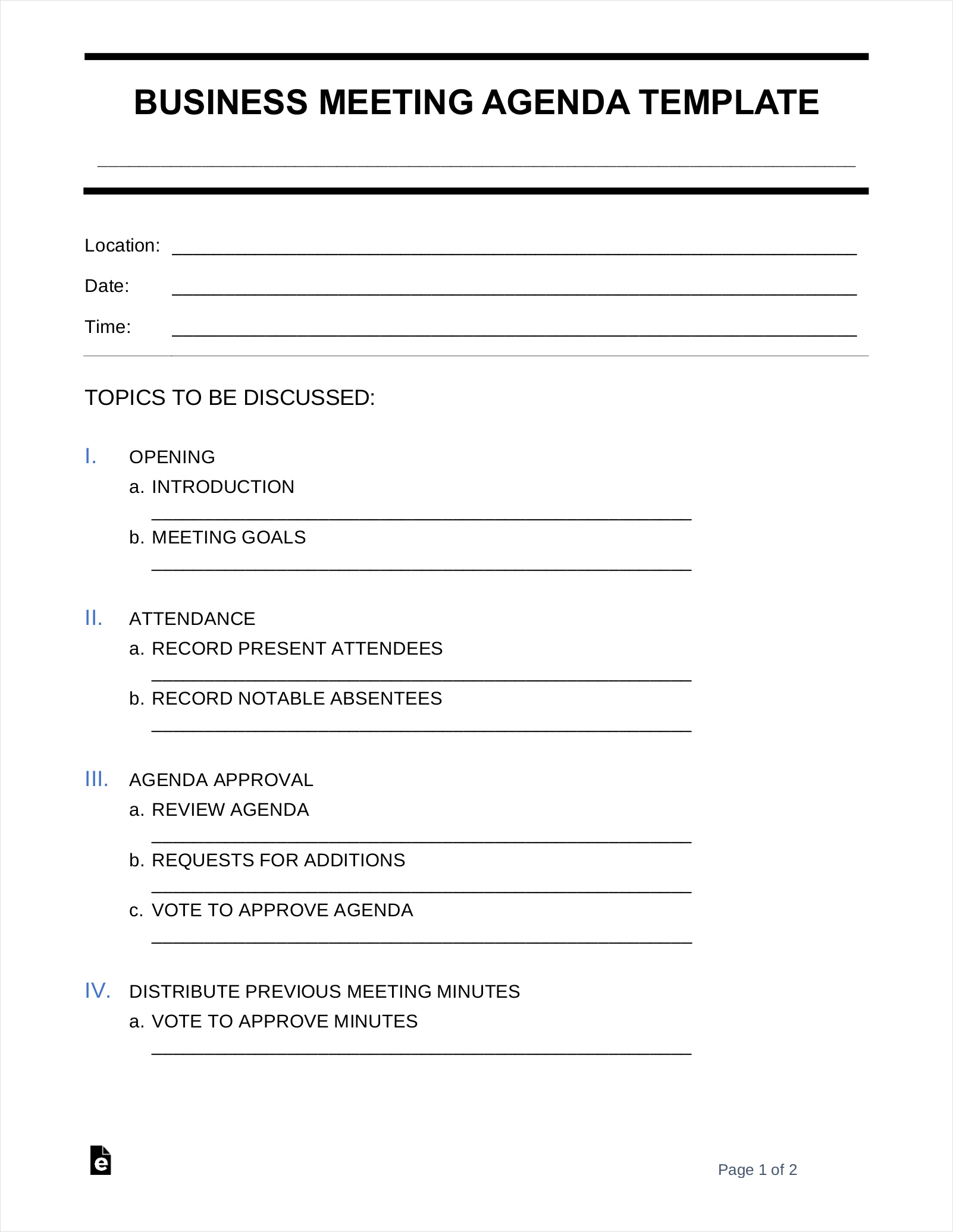A professional meeting agenda is a document that outlines the topics and activities to be discussed and accomplished during a meeting. It serves as a roadmap, ensuring that the meeting stays focused, productive, and organized. A well-prepared agenda sets clear expectations for all participants and helps them prepare accordingly. By providing structure and direction, a professional meeting agenda maximizes the efficiency and effectiveness of the meeting, leading to better outcomes and decisions.
Why is a Professional Meeting Agenda Important?
A professional meeting agenda is crucial for several reasons:
- Organization: An agenda helps keep the meeting organized, ensuring that all topics are covered and nothing important is overlooked.
- Focus and Productivity: By clearly defining the purpose and objectives of the meeting, an agenda helps participants stay focused on the agenda items, minimizing distractions and tangents.
- Time Management: A well-planned agenda allocates specific time slots for each agenda item, preventing meetings from running over time and ensuring that all topics are addressed within the allocated time frame.
- Preparation: An agenda allows participants to prepare for the meeting by researching and gathering necessary information or materials related to the agenda items.
- Accountability: With an agenda, it is easier to track progress and hold participants accountable for their assigned tasks or responsibilities.
How to Create a Professional Meeting Agenda
To create an effective professional meeting agenda, follow these steps:
1. Determine the Meeting Objective
Start by clearly defining the purpose and objective of the meeting. What do you hope to achieve or discuss during the meeting? Write a concise and specific objective statement to guide the agenda-creation process.
2. Identify Key Agenda Items
Next, identify the main topics and discussion points that need to be addressed during the meeting. Consider the meeting objective and the desired outcomes. List these agenda items in a logical order, ensuring that they flow smoothly and make sense to the participants.
3. Allocate Time for Each Agenda Item
Assign a realistic time frame for each agenda item to ensure that the meeting stays on track and within the allotted time. Be mindful of the importance and complexity of each agenda item when determining the time allocation.
4. Include Relevant Supporting Materials
If any documents, reports, or presentations need to be reviewed or discussed during the meeting, include them as supporting materials in the agenda. This allows participants to review and prepare beforehand, promoting a more informed and productive discussion.
5. Add Additional Agenda Items
Consider including any additional agenda items that are relevant to the meeting objective or that participants have requested to discuss. However, be cautious not to overload the agenda or deviate too much from the main focus of the meeting.
6. Assign Roles and Responsibilities
If some specific tasks or responsibilities need to be assigned to participants, clearly state them in the agenda. Assigning roles and responsibilities beforehand ensures that everyone knows what is expected of them and helps prevent confusion or duplication of efforts during the meeting.
7. Share the Agenda in Advance
Send the agenda to all participants well in advance of the meeting. This gives them sufficient time to review the agenda, gather any necessary materials, and prepare for the discussion. Sharing the agenda also demonstrates your commitment to a well-structured and productive meeting.
Sample Professional Meeting Agenda
Here is an example of a professional meeting agenda:
- Meeting Objective: Discuss project progress and plan the next steps for successful completion.
- Agenda:
- Introduction and welcome (5 minutes)
- Review of project progress (20 minutes)
- Presentation by project manager
- Discussion on challenges and achievements
- Identify and address roadblocks (15 minutes)
- Brainstorm potential solutions
- Assign action items to resolve roadblocks
- Next steps and action plan (25 minutes)
- Assign tasks and responsibilities
- Set deadlines and milestones
- Open discussion and questions (10 minutes)
- Wrap-up and closing remarks (5 minutes)
Best Practices for Professional Meeting Agendas
To ensure that your professional meeting agendas are effective, follow these best practices:
- Be Specific and Clear: Use concise and straightforward language in your agenda. Clearly state the purpose, objectives, and expected outcomes of the meeting.
- Keep it Realistic: Allocate sufficient time for each agenda item and avoid overloading the agenda. Be realistic about what can be accomplished within the meeting duration.
- Prioritize Important Topics: Place the most critical and time-sensitive agenda items at the beginning of the meeting to ensure they receive adequate attention and discussion.
- Include Breaks: If the meeting is expected to be lengthy, schedule short breaks to allow participants to refresh and refocus.
- Stick to the Agenda: During the meeting, guide the discussion back to the agenda whenever it veers off-topic. Be assertive in keeping the meeting on track.
- Encourage Participation: Create an inclusive environment where all participants feel comfortable contributing to the discussion. Encourage questions, ideas, and feedback.
- Document Action Items: Assign and document tasks or decisions made during the meeting. This ensures that everyone is clear on their responsibilities and helps with follow-up after the meeting.
- Solicit Feedback: After the meeting, gather feedback from participants to continuously improve future agendas and meetings.
Conclusion
A professional meeting agenda is a vital tool for successful meetings. By providing structure, focus, and direction, it ensures that meetings are productive, organized, and efficient. Creating a well-designed agenda involves defining the meeting objective, identifying key agenda items, allocating time, and sharing relevant materials. Following best practices, such as being specific and clear, prioritizing important topics, and encouraging participation, further enhances the effectiveness of professional meeting agendas. By implementing these strategies, you can facilitate meaningful discussions, drive decision-making, and achieve desired outcomes in your meetings.
Professional Meeting Agenda Template Excel – Download
